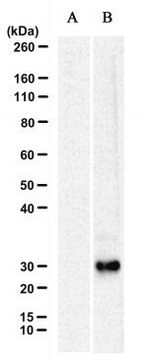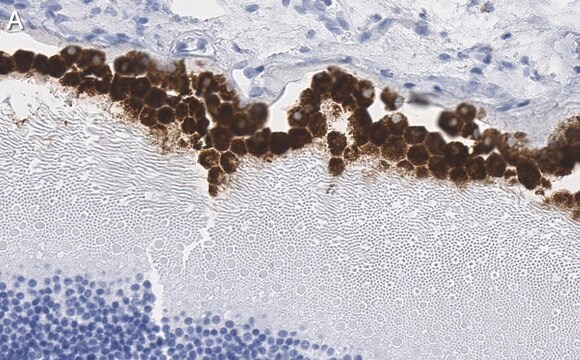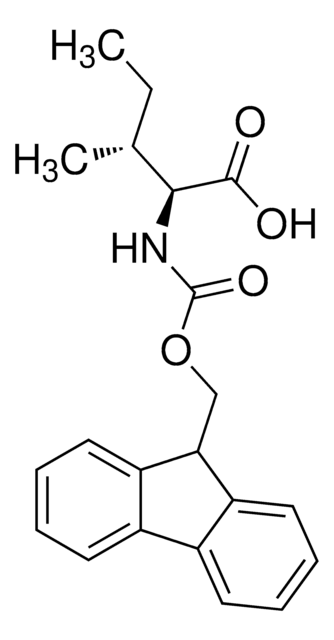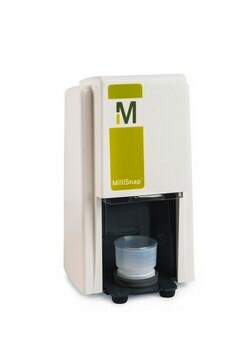MABN2438
Anti-RPE65 Antibody, clone KPSA1
Synonim(y):
All-trans-retinyl-palmitate hydrolase, EC:3.1.1.64, Lutein isomerase, Meso-zeaxanthin isomerase, Retinal pigment epithelium-specific 65 kDa protein, Retinoid isomerohydrolase, Retinol isomerase
About This Item
Polecane produkty
pochodzenie biologiczne
mouse
Poziom jakości
forma przeciwciała
purified antibody
rodzaj przeciwciała
primary antibodies
klon
KPSA1, monoclonal
reaktywność gatunkowa
bovine, human, mouse
opakowanie
antibody small pack of 100
metody
direct ELISA: suitable
immunohistochemistry (formalin-fixed, paraffin-embedded sections): suitable
western blot: suitable
izotyp
IgG1κ
sekwencja epitopowa
C-terminal
numer dostępu Protein ID
numer dostępu UniProt
informacje o genach
human ... RPE65(6121)
Specyficzność
Immunogen
Zastosowanie
Evaluated by Western Blotting in Bovine retina microsomal preparation.
Western Blotting Analysis: A 1:10,000 dilution of this antibody detected RPE65 in Bovine retina microsomal preparation.
Tested Applications
Western Blotting Analysis: A representative lot detected RPE65 in Western Blotting applications (Golczak, M., et al. (2010). J Biol Chem. 285(13):9667-9682; Banskota, S., et al. (2022). Cell. 185(2):250-265.e16).
Immunoaffinity Purification: A representative lot was used for purification of crossed-linked RPE65.(Golczak, M., et al. (2010). J Biol Chem. 285(13):9667-9682).
Immunohistochemistry Applications: A representative lot detected RPE65 in Immunohistochemistry applications (Amengual, J., et al. (2014). Hum Mol Genet. 23(20):5402-17).
ELISA Analysis: A representative lot detected RPE65 in ELISA applications (Golczak, M., et al. (2010). J Biol Chem. 285(13):9667-9682).
Note: Actual optimal working dilutions must be determined by end user as specimens, and experimental conditions may vary with the end user.
Opis wartości docelowych
Postać fizyczna
Rekonstytucja
Przechowywanie i stabilność
Inne uwagi
Oświadczenie o zrzeczeniu się odpowiedzialności
Nie możesz znaleźć właściwego produktu?
Wypróbuj nasz Narzędzie selektora produktów.
Kod klasy składowania
12 - Non Combustible Liquids
Klasa zagrożenia wodnego (WGK)
WGK 1
Temperatura zapłonu (°F)
Not applicable
Temperatura zapłonu (°C)
Not applicable
Certyfikaty analizy (CoA)
Poszukaj Certyfikaty analizy (CoA), wpisując numer partii/serii produktów. Numery serii i partii można znaleźć na etykiecie produktu po słowach „seria” lub „partia”.
Masz już ten produkt?
Dokumenty związane z niedawno zakupionymi produktami zostały zamieszczone w Bibliotece dokumentów.
Nasz zespół naukowców ma doświadczenie we wszystkich obszarach badań, w tym w naukach przyrodniczych, materiałoznawstwie, syntezie chemicznej, chromatografii, analityce i wielu innych dziedzinach.
Skontaktuj się z zespołem ds. pomocy technicznej








